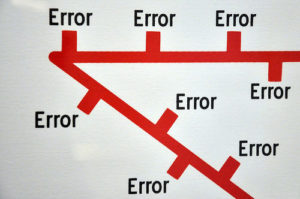 Their unconfirmed Chapter 13 case was dismissed and the unrepresented debtors sitting before the judge didn’t understand.
Their unconfirmed Chapter 13 case was dismissed and the unrepresented debtors sitting before the judge didn’t understand.
“Why did our payments keep going up?” they asked. “We can’t pay that much”.
The judge noted that their current plan called for a pot of $73,000 over the life of the plan.
The trustee had the answer: because the means test calculation that your former attorney filed had errors.
The trustee offered that, by her calculations, the debtors’ commitment to the plan should be about $35,000. She was helpless, she said, to substitute her analysis for that done by the debtors’ attorney.
That’s a $38,000 swing between what their attorney calculated they needed to pay and what the trustee calculated.
That’s a $633 a month error on the B-22: six hundred and thirty three dollars in overlooked or understated deductions per month. In this case it made the difference between whether these folks were able to confirm and complete a plan or whether they were ejected from bankruptcy court.
The means test certainly isn’t the most scintillating part of our job as bankruptcy attorneys. It’s fact ladened, messy, and ill defined. But which of those is an excuse for not soldiering on and getting good at it?
Get better at it
Read more here:
When The Means Test Isn’t So Mean
Use The Real Tax-Due Date For Means Test
Sign up for the NACBA Fall Workshops in Amelia Island. Charlotte NC bankruptcy attorney Susanne Robicsek and I will have two sessions on the means test, one on the fundamentals and a second on advanced problems in means testing.
Get my video presentation on the basics of means testing.
Whatever you do, do it.
Image courtesy of Nick J. Webb.







